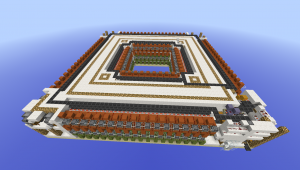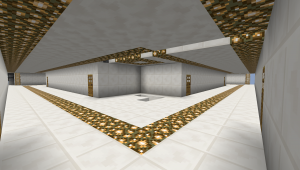The Biggest Threat to Cyber-Security is Surveillance
September 8th, 2016The biggest threat to cyber-security is surveillance. Or rather the will, ability and legal status of organisations who prioritise surveillance and active attack abilities above defence and security.
The point is, that surveillance does not mean passive wire-tapping. It means attacking infrastructure where the data you want is available unencrypted, or infrastructure through which the message or data travels. Infrastructure which might not be under control of the entity trying to gain these surveillance-capabilities. For instance it might target the sender or the recipient of an encrypted e-mail or instant-messenger message. Or an intermediary, in order to know who communicates with who in the first place. All these actions are not comparable with passive wire-tapping, in fact, these attacks are indistinguishable from hacker-attacks aimed towards any other goal, like the enactment of botnets; and they also enable the attacker not just to eavesdrop, but to do whatever else he pleases, from launching man-in-the-middle attacks to denial-of-service, ransomware, attacking somebody else and so on. So surveillance is an attack as any other.
The problem now stems from the fact, that in order to attack somebody, you need knowledge of insecure systems, vulnerabilities, on their part. Typically, what you use are exploits, and if they’re not published yet, they’re called zero-day-exploits. Now, as long as you don’t tell anyone, these vulnerabilities don’t get fixed. They might be found by somebody else, and published or not. As soon as they get published, they loose their value for attack. Now, during that period when you have a zero-day-exploit on your hands, you might mitigate that vulnerability on your systems. But you actually can’t mitigate them on all systems of your allies, because then the secret would go out. So you don’t. Which leads to one outfit having knowledge of vulnerabilities leaving every other outfit at risk.
In a practical example, 2013 a server was hacked, that was used by the NSA as staging system for attacks. The Shadow Brokers hack was made public only in 2016, and it turned out, the NSA had stashed a load of zero-day-exploits there, some of which were still zero-days in 2016, but the majority of them had already been made public. Now, not only illustrates this that independent researches will find these “secret” vulnerabilities eventually, but also something much more sinister: The NSA had actually put every other US-agency, including FBI and DOD, the government, critical infrastructure (including power plants, water supply and hospitals) and finally all its own citizens at risk.
With all the secret services world-wide, and often also police-units (For instance, the Zürich Police bought surveillance software from Hacking Team containing three zero-day-exploits) involved in ramping up their cyber-attack-capabilities, most often with the goal of surveillance, we can see an extreme effect on creating a market for zero-day-exploits. Where fifteen years ago no noticeable market existed at all, we now have one whose prices start at USD 40’000 and go up to USD 500’000 per exploit, as evidenced by the price-list published by Zerodium In other words, secret services and police are actively undermining the security of everyone on this planet, friend and foe alike.
The trouble is, highly technological societies are much more vulnerable to this. For guerillas, insurgents and terrorists the benefits of being able to exploit vulnerabilities is much greater, and they don’t really have to defend any friends from such attacks. So the ones that suffer the most, are the people and governments of exactly the same nations and states whose secret services and police are actively undermining their security. This is a grave situation, as most governments have not even realised what it is they have their secret services and police doing, and are actively trying to destroy their own security with initiatives that call for weakening of crypto or for government back doors. Or at least, trying to explicitly legalise these practices as seen with Switzerlands NDG, which of course will have a very much adverse effect of security.
The solution is surprisingly simple, the only impediment is, as usual, the widespread incomprehension of the problem itself. Since every vulnerability that is made public eliminates the exploitation of it for everyone, the only solution is to make every vulnerability public as soon as possible. The usual, and in fact “best practice” of the computer industry, is called “responsible disclosure”, where the manufacturer of a software or product is informed a few days or maximum weeks in advance, so he can fix the vulnerability, before the issue is made public. And in the end, it’s the only solution that will really make us more secure.












 1891 Fruit Co. Building
1891 Fruit Co. Building Front
Front Entrance
Entrance Reception View
Reception View Produce
Produce Factory Floor Right
Factory Floor Right Factory Floor Left
Factory Floor Left



